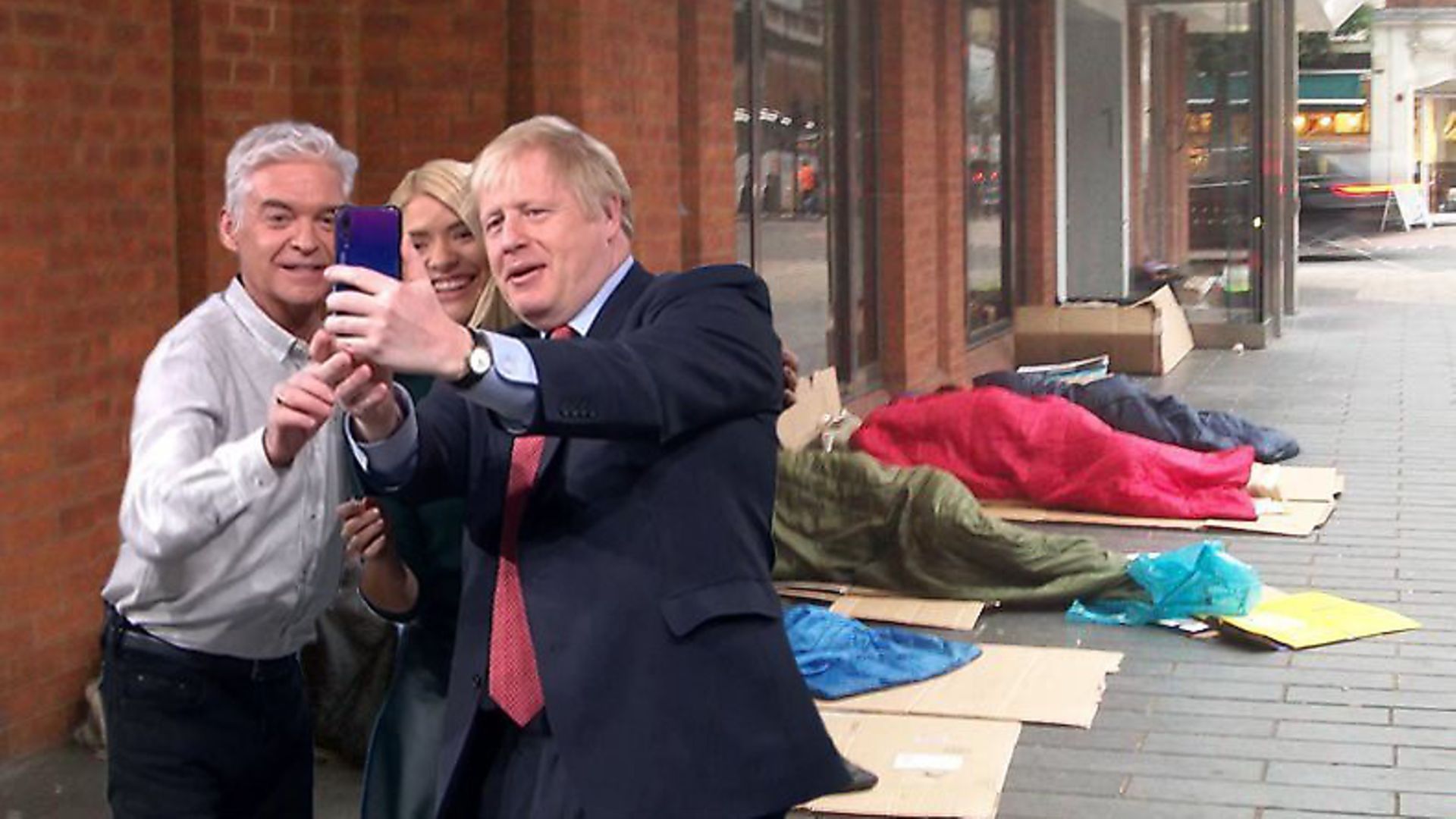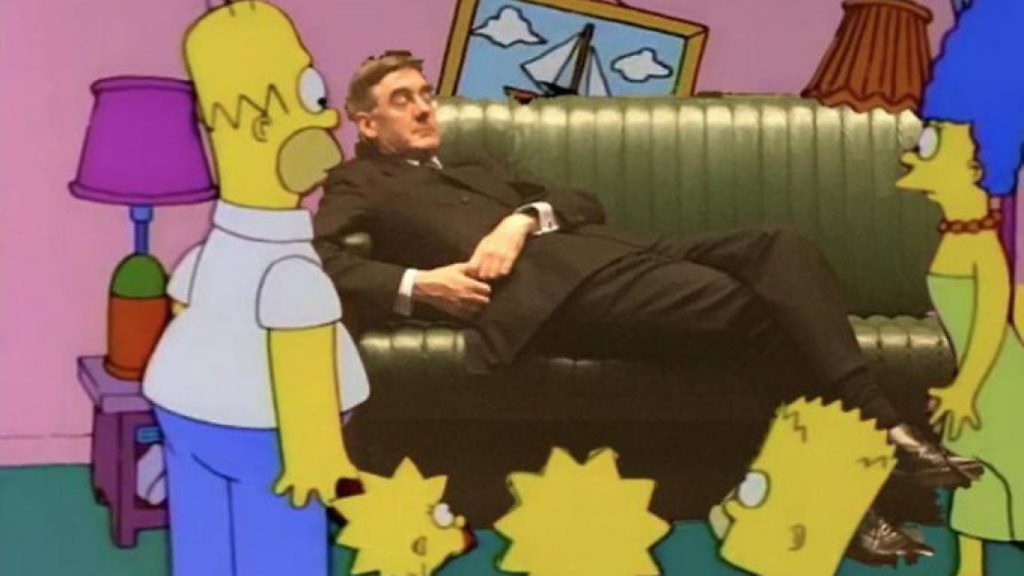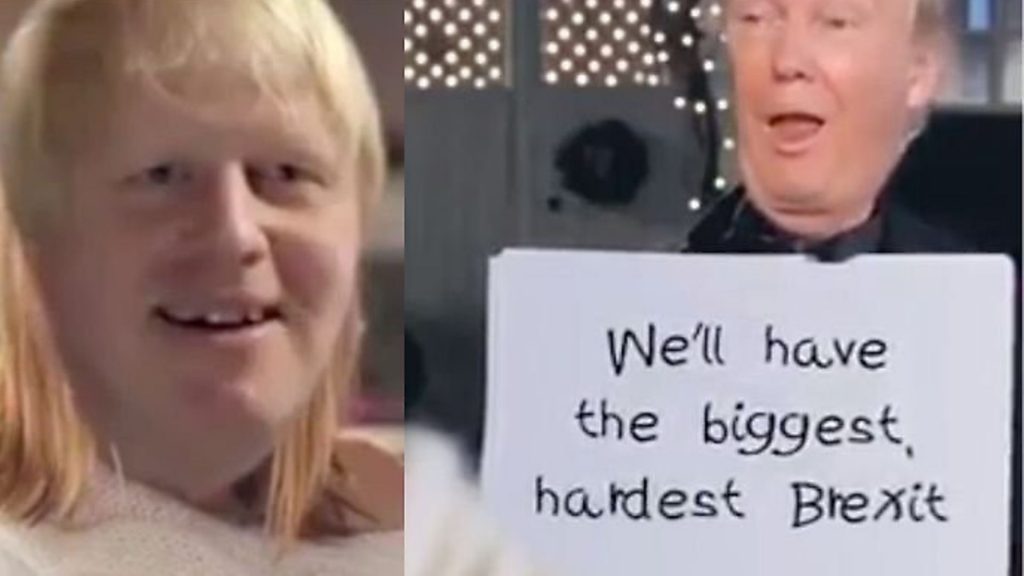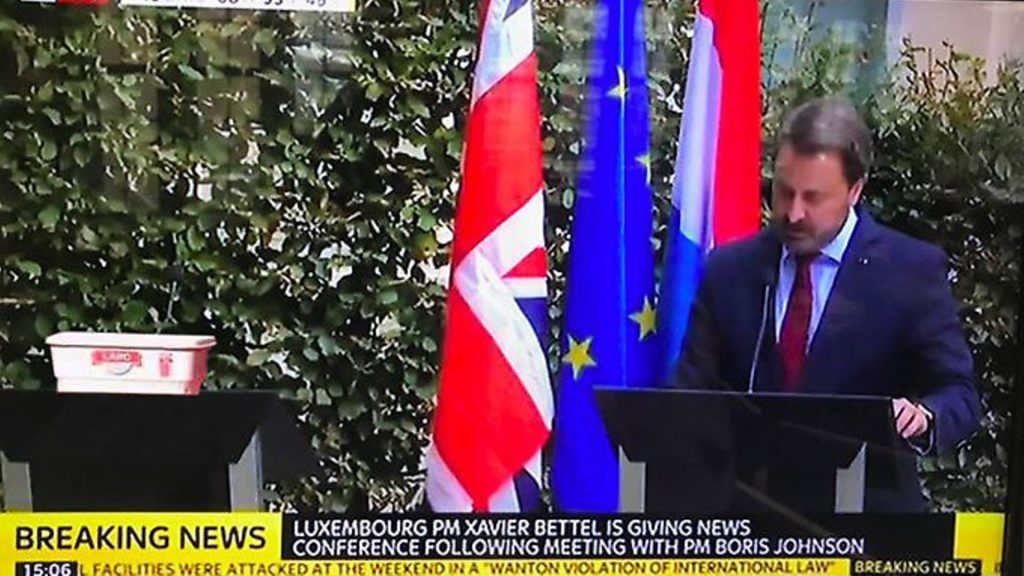
After a decade of proliferation, memes have become an unstoppable cultural force. As they spill over into politics, ELLE HUNT asks how powerful they have really become.

In December 2013, Drew Scanlon had been shooting an episode of Unprofessional Fridays, a weekly show about gaming, where he worked as a producer. At some point in the two-hour live stream his colleague made an off-colour joke, and Scanlon’s reaction was captured on camera. It wasn’t until years later that he received a Twitter message from a stranger. It read: “My mum just used an animated gif of you on Facebook”.
It was February 2017, and a seconds-long clip of his slow blink of disbelief had gone viral as an online expression of mild surprise. Soon Scanlon was known worldwide as “Blinking White Guy”.
He left the website shortly afterwards to work on his YouTube travel documentary series, but with just one gif of his face viewed nearly one billion times on the giphy.com database, on the internet he remains, as a journalist put it recently, “pretty much the official face of ‘what the f**k?'”
Speaking over Skype from his home in San Francisco, a bearded Scanlon acknowledges that he is barely recognisable from the representation of his face routinely reached for online. “The internet is a very big place, and it’s not until something like this happens to you that you grasp that – but I also don’t feel any ownership over it. It is my face, but the internet is responsible for converting it into a meme.” Scanlon may have moved on, but the internet has not stopped this process of elevating – if only for a moment – fleeting, forgettable online ephemera, seemingly at random and at breakneck speed.
Memes, as most of us understand them today, started to emerge a little over a decade ago, as mostly images with captions in bold Impact font, making a fairly straightforward observation or gag – you may remember LOLcats. From these humble beginnings, memes have become more nuanced and ubiquitous, spinning off from the slightest of sparks to take on an identity to the internet at large: strangers’ family photos (Scumbag Steve, Disaster Girl), their pets (Doge, Grumpy Cat), stock images (First World Problems, Distracted Boyfriend), viral videos (Double Rainbow, Chewbacca Mom), odd news items (Harambe the gorilla, Antoine “hide yo’ kids, hide yo’ wife” Dodson) and increasingly impenetrable, ironic nonsense (“They Did Surgery on a Grape”; it defies description).
The majority burn fast and bright, turning over at a speed that could give you whiplash if you tried to keep pace. Over the last 10 years memes have become an unstoppable cultural force, both on the internet and increasingly off it as brands, politicians and older generations have joined in. But what is driving their frenetic pace of production? And if they’re not now just captioned pictures of cats – what are they, exactly? Answering that has been Don Caldwell’s job for nearly a decade – and “even I have a hard time articulating some of the stuff going on,” he says. “It’s always changing, and it’s always getting weirder.”
Employed full-time as editor-in-chief of KnowYourMeme.com, a collaborative reference site that aims to make meme culture comprehensible to a wider audience, Caldwell oversees a team of six in New York, LA and Moscow to update a Wikipedia-style database of memes. That means about 15 to 20 new entries each week, setting down for the record their origins, spread and evolution. Caldwell’s team looks to confirm sources and “major points of amplification” as best they can, but this can be a challenge in the online quagmire; the gif of Scanlon’s Blinking White Guy, for example, had existed for two years before it went viral in a high school student’s joke about biology class on Twitter. “If we see 10, 20 variations of the same type of joke or format, then it seems like the ball is rolling and we’re ready to start covering.”
And that process never stops, given the speed with which memes’ meanings can change. “We document memes as if they were living organisms – we nail down where it was born, then chronicle its lifecycle,” says Caldwell. It comes as no surprise to learn that he holds a degree in evolutionary anthropology. The term ‘meme’ was in fact coined by Richard Dawkins, in his 1976 book The Selfish Gene, as a unit of culture that, in being propagated, may evolve similarly as through a process of natural selection. It was first applied to online phenomena in the mid- to late 1990s – you might remember the 3D-rendered Dancing Baby and the equally hypnotic Hampster [sic] Dance. (If you are not familiar with Goatse, save yourself.)
“When the internet came around and weird things started to go viral, that term ‘meme’ was just adopted because it seemed to fit so well – it’s just a unit of culturally-transmitted information,” says Caldwell. “We generally associate it with pretty much any type of thematic joke, or slang term, or viral video – anything that proliferates throughout the internet.” KnowYourMeme counts slang such as “LOL”, and common internet phrasal templates – Caldwell calls them “snowclones” – such as “x all the y” (“clean all the things”). It is a broad church, and having to be ever more inclusive as internet culture increasingly dovetails with mainstream culture. “Nowadays the saturation is just so much more. Ten years ago, meme culture was almost exclusively for youth, and now it’s everybody.”

He credits that to technological advances – video hosting and mobile internet becoming more affordable, improved image quality, smartphones untethering digital communication from our desktop computers – and individual platforms developing their own cultures over time. The explosion of Reddit as “ground zero for memes, churning them out all the time” around 2012, for example, helped usher them into the mainstream, while emoticons and emoji made people more comfortable using images to express themselves online.
When Caldwell joined KnowYourMeme in 2010, memes were more simple, and there were fewer of them (he sounds a bit wistful). Five years into YouTube, it was a boom time for viral videos, with the internet’s collective imagination captured by a man tearfully in awe of a double rainbow (plucked from obscurity on the platform by talk show host Jimmy Kimmel) and a seven-year-old boy left existential by anaesthetic at a dentist appointment. The other major medium were ‘image macros’ – the name given to that stereotypical picture-caption format – often generated from a stock set of characters and formats. Scumbag Steve, for example, was born when a family snapshot of a teenage boy wearing baggy clothes and a sideways fitted cap surfaced on the front page of Reddit in 2011 and was embraced, entirely by looks alone, as the internet’s favourite “opportunistic and freeloading juvenile” (as KnowYourMeme put its). The Daily Mail called him an “internet teenage hate figure”, revealing that the “infamous picture was taken by his mother (and he’s actually quite a nice guy)”. Later Pepsi referenced Scumbag Steve in an “internet taste test” ad, hiring an actor to impersonate him from the meme.
Laina Morris, best known to the internet as “Overly Attached Girlfriend” after a still from her YouTube video parodying Justin Bieber’s Boyfriend went viral in June 2012, says her meme led her to appear on Jimmy Fallon’s show, be given a Kia car, and fly to Singapore for a staring competition with Jessica Alba. “The entire experience is strange, to be honest, so strange kind of became my normal at one point.” Though Morris, a Texan who recently quit YouTube for good, says she is recognised from her meme a couple of times a month, she does not consider herself famous. “The meme itself feels very separate to me. If I happen to come across it when I’m online, I think ‘oh, there’s my meme’, rather than ‘there’s my face’.”
Few people who have been immortalised in this way have succeeded in translating it into anything lastingly lucrative. Scanlon may be the online face of a widely-felt emotion, cemented as a useful shorthand of digital communication, but it’s not in his control. (He has, however, managed to raise US $33,000 for multiple sclerosis.) The notable exception is the late Grumpy Cat, the original “petfluencer” who launched a multi-media empire after going viral from Reddit in 2012. Though the cat’s owner denied a reported net worth of nearly $100m in 2014, in January last year a single copyright lawsuit brought them $710k – and that’s not including the merchandise, endorsement deals, or film. Grumpy – real name Tardar Sauce – even had representation: from Ben Lashes, the same “meme manager” who had earlier taken a chance on Keyboard Cat in 2009 (real quote: “it needed a manager in the same way that the Beatles needed Brian Epstein”).
Caldwell singles out “Cash Me Ousside Howbow Dah” as another meme that went onto be something more – after the viral success of her lippy appearance on Dr Phil in 2016, 13-year-old Danielle Bregoli was able to launch a music career as rapper Bhad Bhabie: “She kind of became the meme,” says Caldwell. Increasingly it seems that the ‘real world’ is influencing the internet less than the other way round; online culture is infiltrating the everyday, as TV shows, films and songs try to harness the power of memes to cut through the competition. Netflix recorded the biggest week for an original film with survival horror Bird Box, despite fairly desultory reviews, because of gags on social media and the blindfold “challenge” it inspired. Similarly, New Rules by Dua Lipa and Drake’s Hotline Bling had far greater cultural impact for their versatile hooks (“One: don’t pick up the phone”) and videos laden with “exploitables” – what Caldwell and the KnowYourMeme crowd call an image crying out to be turned into a meme.
Nowhere is this feedback loop more obvious – and impactful – than in politics: no sooner had Theresa May explosively confessed to running through fields of wheat or Jacob Rees-Mogg had reclined in the House of Commons than both had been amplified online to become major, lasting talking points.
Memes are now well-established political strategy as a means of changing the conversation – the digital equivalent of Crosby Textor’s dead cat. Even the Conservatives have tried their hand at online irony, recently “shitposting” with purposely bad graphic design and ironic Comic Sans about getting Brexit done on their official Twitter account. That may still be a bridge too far for most digital natives, but as memes have become more mainstream the distaste once felt at them being wielded by politicians and brands has somewhat waned. “Earlier on, meme culture flat-out rejected that stuff and said, ‘No, you don’t get to do that’,” says Caldwell. “Now it’s like: ‘if you can pull it off, okay’.”
Regardless of format, what a witty or astute application of a meme signals is literacy: “There are some that you are only going to understand if you belong to a certain club.” As more people have felt in on the joke, the communities that feel a sense of ownership of the subculture, such as Reddit and 4Chan, have had to work harder to protect it from mainstream platforms like Twitter and, increasingly, Instagram (which has even hired a ‘meme liaison’ to manage those relationships). The trend for hyper-ironic, ‘dank’ memes emerged over the last four to five years for that reason, and “has just got progressively weirder”, says Caldwell. “Sometimes they’re like five levels of irony deep, or even five layers of memes – you have to know that many just to be able to piece together what it even means.”
This desire for density explains the current popularity of “object-labelling” memes, where different elements of an image are labelled to make some point or joke. The most famous (or perhaps just the most recent) example is “Distracted Boyfriend”. As a format it as effective in communicating to an audience of one or one million, and endlessly adaptable – fuel for the internet’s unrelenting drive to produce. Dr Scott Wark, a self-described meme researcher at the University of Warwick’s Centre for Interdisciplinary Methodologies, points out that all our interactions online are dependant on output: “The only way that we have any substance online is in what we produce, so it’s become really basic to being online.”

The increasing complexity and ubiquity of memes reflects the desire for more nuance – and perhaps more control. Wark frames the evolution from “straightforwardly silly” LOLcats to dense, meta, often perverse online artefacts as evidence of a desire for ownership and influence on an internet dominated by a few privately-owned platforms. Even the use of stock images, often still watermarked, is a nod to subversion of corporate control. “People are really aware of the fact that their labour is being used to produce value for someone else, even in an intuitive way,” says Wark.
That collective spirit of defiance is piqued by attempts to control it, such as when Beyonce’s publicist attempted to have stills from her 2013 Super Bowl half-time show removed from the internet, sparking the “Unflattering Beyonce” meme; or when earnest posturing over the death of Harambe the gorilla prompted a flood of juvenile jokes. The best-known and strangest example is Pepe the frog, an anomaly among memes for its longevity and evolution.
Since Pepe first emerged in 2005 as a chilled-out webcomic character, he has gone from a fairly straightforward expression of emotion (“Feels good/bad, man”) to certified hate symbol, despite (or perhaps fuelled by) creator Matt Furie’s campaign to ‘Save Pepe’. The flag of ‘Kekistan’, a made-up country connected with Pepe on 4Chan, was seen at the 2017 white nationalist rally in Charlottesville, Virginia, that ended in the death of protestor Heather Heyer after a car was deliberately driven into a crowd. Wark says “one of the mythic explanations” for Pepe’s descent into darkness was that 4Channers took umbrage with their beloved frog being tweeted by mainstream celebrities Nicki Minaj and Katy Perry: “People tried to make it really racist so that they wouldn’t do that again.”
It is a “crazy life cycle,” says Caldwell. “It’s weird to see a meme keep being used for so long, turn into so many different versions of itself.”
And it continues to evolve. Pepe’s association with alt-right bigotry means he has fallen from favour with the mainstream, which likes symbols to have consistent meanings – but on the video-streaming platform Twitch, he is still routinely reached for as a digital reaction, often simply to express that “a cool song is playing”, says Caldwell. “Most people will tell you that Pepe on Twitch has no political connotation, he’s just a frog. If you aren’t exposed to these subcultures, and all you see is the news telling you Pepe the Frog is racist, you’re going to see that and assume those people are racist, and they’re not.”
Pepe may be an outlier, but his evolution does reflect memes’ increasing complexity and potential for nuance – an inevitability of digital culture advancing as the distinctions between online and offline break down. Wark argues that, now that our fridges can be connected to the internet, we are “post-digitality” – forcing those native meme-makers to work harder to be weird, “to protect different subcultures from the mainstream that had started latching on”.
Scanlon, reflecting on his own claim to internet fame, knows better than to think that he has any say over how his image is used. “I’m sort of at the mercy of the internet – so I want to stay in their good graces.” He is grateful that it is at least “fairly innocuous”. “I’m not doing anything bad in it, I’m just making a facial expression. Generally, people have not used it for evil.” Though – given the ways of memes – that could change in a blink.
– This story was first published by Tortoise, a different type of newsroom dedicated to a slower, wiser news.
Try Tortoise for a month for free at www.tortoisemedia.com/activate/tne-guest and use the code TNEGUEST.









